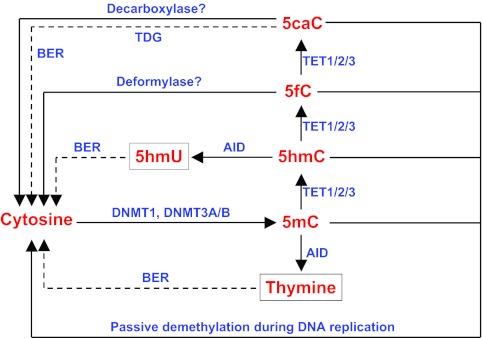Fig. 3.
Involvement of Tet family proteins in the regulation of DNA methylation and demethylation: potential mechanisms. Tet family proteins (TET1/2/3) catalyze 5mC oxidation to 5hmC. Tet family proteins can also convert 5mC or 5hmC further into 5fC and 5caC, and the latter may be recognized and excised by thymine DNA glycosylase (TDG) to generate cytosine and thereby complete demethylation. Alternatively, because 5hmC is more sensitive than 5mC to deamination (via activation-induced deaminase, AID), it can be converted to 5-hydroxymethyluracil (5hmU), which in turn can be converted to cytosine following base-excision repair (BER) pathway-mediated demethylation (Guo et al., 2011). It remains unknown whether there are decarboxylases or deformylases that can remove the modification directly. Importantly, 5mC and its oxidative derivatives may undergo passive demethylation by dilution during DNA replication (Inoue and Zhang, 2011; Inoue et al., 2011).

